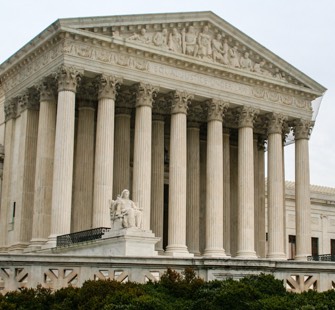 On Friday, January 15, 2016, the United States Supreme Court accepted the petitioner’s request to hear Cuozzo Speed Technologies v. Lee, a case that will now require the Court to address two questions about inter partes review (IPR) proceedings.
On Friday, January 15, 2016, the United States Supreme Court accepted the petitioner’s request to hear Cuozzo Speed Technologies v. Lee, a case that will now require the Court to address two questions about inter partes review (IPR) proceedings.
IPR proceedings were created by the America Invents Act (AIA), which was signed into law by President Barack Obama on September 16, 2011. IPR and the other two forms of post-grant challenge to issued patents — Post Grant Review (PGR) and Covered Business Method (CBM) Review — did not become available as a procedure to challenge patents until September 16, 2012. Thus, these proceedings are quite new and Cuozzo will be the first opportunity for the Supreme Court to weigh in on these controversial administrative proceedings.
According to the statute, “[a] person who is not the owner of a patent may file a petition to institute an inter partes review of the patent.” 35 U.S.C. 311(a). Significantly for this appeal, the statute also says: “The determination by the Director whether to institute an inter partes review under this section shall be final and nonappealable.” 35 U.S.C.314(d). Additionally, although the statute is silent as to the proper claim construction standard to use in post grant proceedings, the United States Patent and Trademark Office (USPTO) has decided to apply the familiar standard used elsewhere throughout the Office, which is the broadest reasonable interpretation (BRI) rather than the so-called “Phillips standard” that is used in district court litigation and narrowly construes claims in an already issued patent.
The first question the Supreme Court will address is whether it is appropriate for the Patent Trial and Appeal Board (PTAB) of the USPTO to use a different claim constructions standard than is used in federal district court. The second question taken by the Supreme Court is on whether it is appropriate to have institution decisions insulated from judicial review.
The specific questions presented in the Cuozzo Speed Technologies certiorari petition were as follows:
1. Whether the court of appeals erred in holding that, in IPR proceedings, the Board may construe claims in an issued patent according to their broadest reasonable interpretation rather than their plain and ordinary meaning.
2. Whether the court of appeals erred in holding that, even if the Board exceeds its statutory authority in instituting an IPR proceeding, the Board’s decision whether to institute an IPR proceeding is judicially unreviewable.
In accepting the case, the Supreme Court merely wrote: “The petitions for writs of certiorari are granted.”
Normally, the Supreme Court does not take a Federal Circuit appeal to compliment the Court on how well they have resolved a particular matter, so it seems safe to bet that the Federal Circuit will be reversed on one or both of the issues.
Meanwhile, after taking Cuozzo, another petition for certiorari was filed with the Supreme Court: the petition challenging the decision of the Fourth Circuit in Cooper v. Lee. This latest challenge to the post grant proceedings at the USPTO raises a constitutional question about whether an Article II tribunal can declare an issued patent claim invalid.
Stay tuned!
Tags: BRI, broadest reasonable interpretation, Cuozzo, Inter Partes Review, IPR, patent, patents, PTAB, SCOTUS, Supreme Court, USPTO




You share in the PLI Practice Center community, so we just ask that you keep things civil. Leave out the personal attacks. Do not use profanity, ethnic or racial slurs, or take shots at anyone's sexual orientation or religion. If you can't be nice, we reserve the right to remove your material and ban users who violate our Terms of Service.